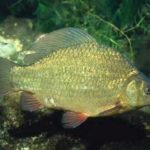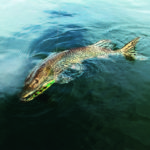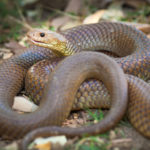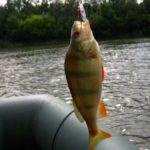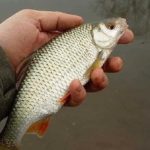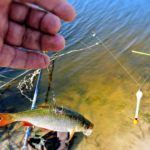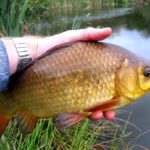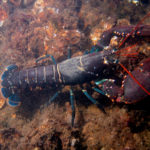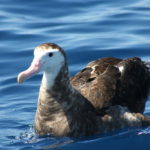Interesting facts about fishing
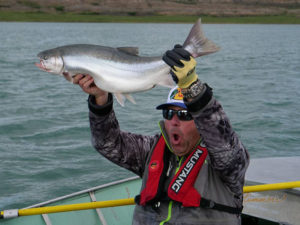 Fishing is one of the oldest occupations of man. Fishing began with the advent of man. For a long period of human history, fishing has been fishing, a way of getting food to feed a family. With the development of society, many began to perceive fishing as a favorite hobby, an excellent way of outdoor activities.
Fishing is one of the oldest occupations of man. Fishing began with the advent of man. For a long period of human history, fishing has been fishing, a way of getting food to feed a family. With the development of society, many began to perceive fishing as a favorite hobby, an excellent way of outdoor activities.
What is the history of fishing and what are some interesting facts related to this hobby? We will talk about this in our article.
The emergence of fishing
More than two million years ago a primitive man was born. Most of his story he took ready-made from nature. Therefore, the main occupations were gathering, hunting and of course fishing. Ancient people tried to make their homes near water bodies, so that it was possible to catch river and sea fish. Archaeologists believe that at first primitive people went into shallow water and simply caught fish swimming with their bare hands or with sharp sticks. They could hit the fish sharply with a stone. Archaeological excavations prove that with the development of the human brain, the first fishing tools began to appear: nets made from plants and nailed to the bottom with pegs, as well as primitive harpoons – elongated sticks with pointed teeth at the end. The first hooks appeared about thirty thousand years ago and were made of bones or thorns of plants that were tied to pralesque – the tendons of animals and vines.
Changes in fishing technology after the advent of states
Ancient Egyptian frescoes depict fishing scenes from the period of 5-6 thousand years ago. With the advent of the first states, they began to fish from boats and ships using nets. For the nobility, fishing has become a hobby. The poor fished for food, and the top of the society began to compete in who is better at fishing. There are references to such contests in ancient manuscripts. Ancient China became famous for the fact that the first hooks made of metal and fishing line made of the invention of the Chinese – silk appeared here. More than two and a half years ago, the inhabitants of the ancient Celestial Empire wrote with the help of hieroglyphs books where they described how to fish for a favorite food of the Chinese – rice.
Medieval Europeans considered fishing an activity for gentlemen. The Englishman D. Berners in the book “On fishing with fishing line and hook” described modern fishing methods and praised this passion for the rich. According to the writer, fishing is the best sport that gives only healthy emotions. Berners respected fishing with fishing line and hooks for the opportunity to communicate with nature. The author of the book was negative about those who fish more than the norm and put nets where fishermen with fishing rods like to sit. With the emergence of an industrial society, fishing became sports not only for the aristocracy, but also for commoners. But even in the nineteenth century in Europe, the fishing rod was still made from long branches of shrubs, mainly hazel, and the fishing line was made from horsehair or oil-soaked threads.
More than a hundred years ago, they came up with the most important invention – a fishing line from synthetics. In the future, and rods began to be made of artificial materials. At present, sporting events and sport fishing festivals are held all over the world, and fishermen have access to a huge assortment of fishing gear for every taste and budget.
Fishing safari
In the 21st century, many travel companies organize sea fishing tours. There is a rule of humanism on such exotic fishing: if you catch a fish – let it go. Safari lovers catch fish in several hundred kilograms, take pictures for memory and release the fish. Along the coast of the United States and the Bahamas, blue marlin is caught – a large marine predator capable of gaining weight up to eight hundred kilograms. A giant fish with a body length of up to five meters is capable of moving at a speed of up to one hundred and twenty kilometers per hour. And in the warm waters of the oceans there is another giant fish that can injure a fisherman during a safari. We are talking about barracuda – fish weighing up to 50 kilograms and body length up to two meters. The aggressive predator crippled many unsuccessful fishermen.
And those who do not have extra money for such fishing, are fishing in their native lands. So, Muscovites can now fish even on Chistye Prudy, although earlier it was only a dream. After all, several centuries ago this pond was called Pogany Ponds because of constantly dumping slops and waste there. The fetid smell spread to hundreds of meters, until in the last years of the 17th century Prince Menshikov himself intervened. He ordered that the purchased pond be cleaned, no longer polluted and henceforth be called Clean Ponds.
Pole fishing
Each nation tried to come up with an original way to fish. Fishermen tried to catch more than others, and therefore have always been famous for resourcefulness. Sri Lanka’s fishermen have long been fishing on poles. Now this fishing method is also used, although not so massively. Fishing in this country is a way of earning, so local youth is trying to save money in other ways than to sit on a pole with a fishing rod. But the old people still love to climb the pole, keep their balance there and trap the fish. Fishing from a boat is more convenient, but many wonder why people prefer such an unusual way, like fishing on poles. Perhaps this is not only a tribute to traditions, but also due to unsuccessful attempts in the past to fish from a boat. Be that as it may, the old-timers of these places show the wonders of juggling and really successfully fish for food.
Dolphin fishing
Dolphins are large mammals that live in the seas and adore making friends with humans. They are very smart and kind animals. Fishermen made friends with dolphins so much that they flock with schools of fish right on the net. In Brazil, they catch mullet in this way.
Cormorants fishing
Asian countries gave European fishermen an interesting way to fish using cormorants. Such fishing has a history of several thousand years. Cormorant is a large bird that lives on the seas and outwardly resembles a goose. The bird is amenable to training and is a skilled fisherman. The essence of fishing is that the bird obeys the owner, catches fish, but does not eat, but brings it in its beak directly into the hands of the fisherman. Smart Chinese people at one time learned to wear a ring on a cormorant’s neck so that the bird could breathe and fly freely, but could only eat small fish. That is why it brings a large catch to the owner, and not because of a feeling of love and gratitude to the fisherman. Europeans, as mentioned above, have borrowed this method of fishing from a boat from the Chinese. Fishermen wait in a boat until a bird tied to a long rope catches the fish of the test. As a thank you, the cormorant receives a small fish treat from the fisherman’s hands. Often they fish using cormorants even at night, because it is in the dark that the most delicious and serious types of fish are most active. For visibility, a basket with burning coals is placed on the boat. By the way, in the Middle Ages, fishing with the help of cormorants was the destiny of only royalty. At the court of the monarchs there were special people who trained cormorants to serve the overlord. And the birds themselves were called royal cormorants. By the 19th century, the news of birds had spread far. In Holland they began to educate and train birds and deliver them to different European countries.
Dog fishing
Some northern peoples use dogs as fish assistants. Man’s best friends dive into the water, look for a school of fish and begin to drive it to the shore, where fishermen have already set up nets. As a result, the fish swims in these nets, and the dogs receive a treat in the form of fish as a thank you.
Otter fishing
An otter is a smart animal that can make friends with a person, live with it and help in fishing. This method of fishing was invented by the inhabitants of Indochina. The otter is a predator that loves to eat fish and lives part of life in the water. Trained animals can live their entire lives with the owner. People put a muzzle on the beast so that they do not eat fish, tie a rope and lower the otter into the river. The beast begins to drive the fish to the coastline, where a fisherman with nets or netting is already ready.
